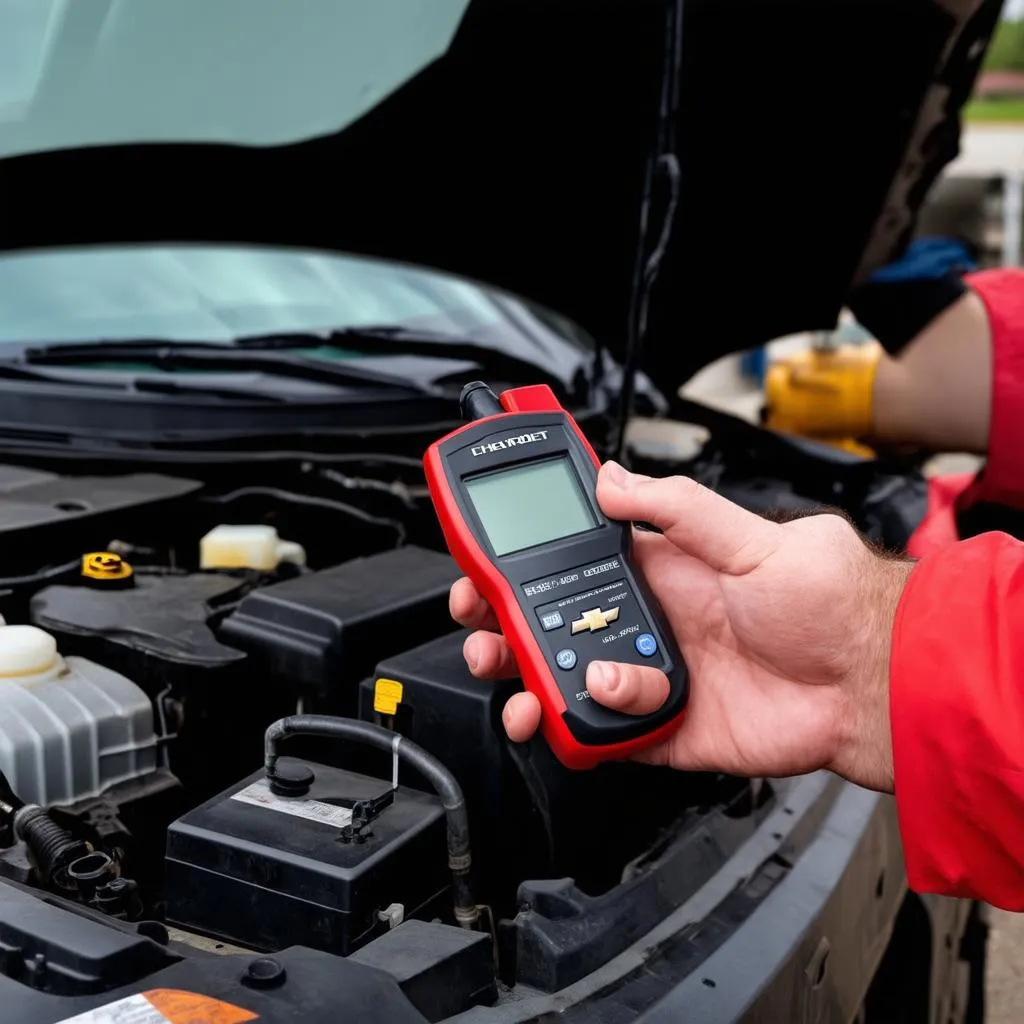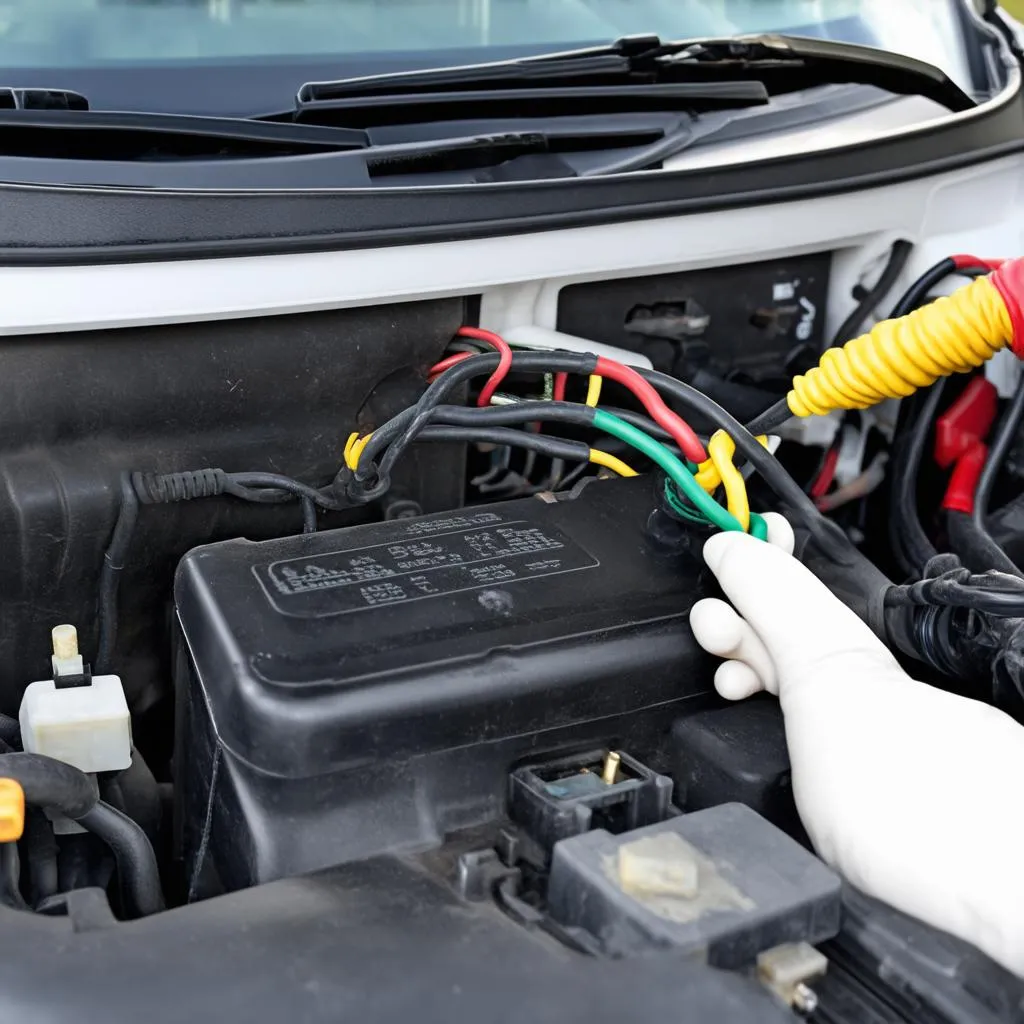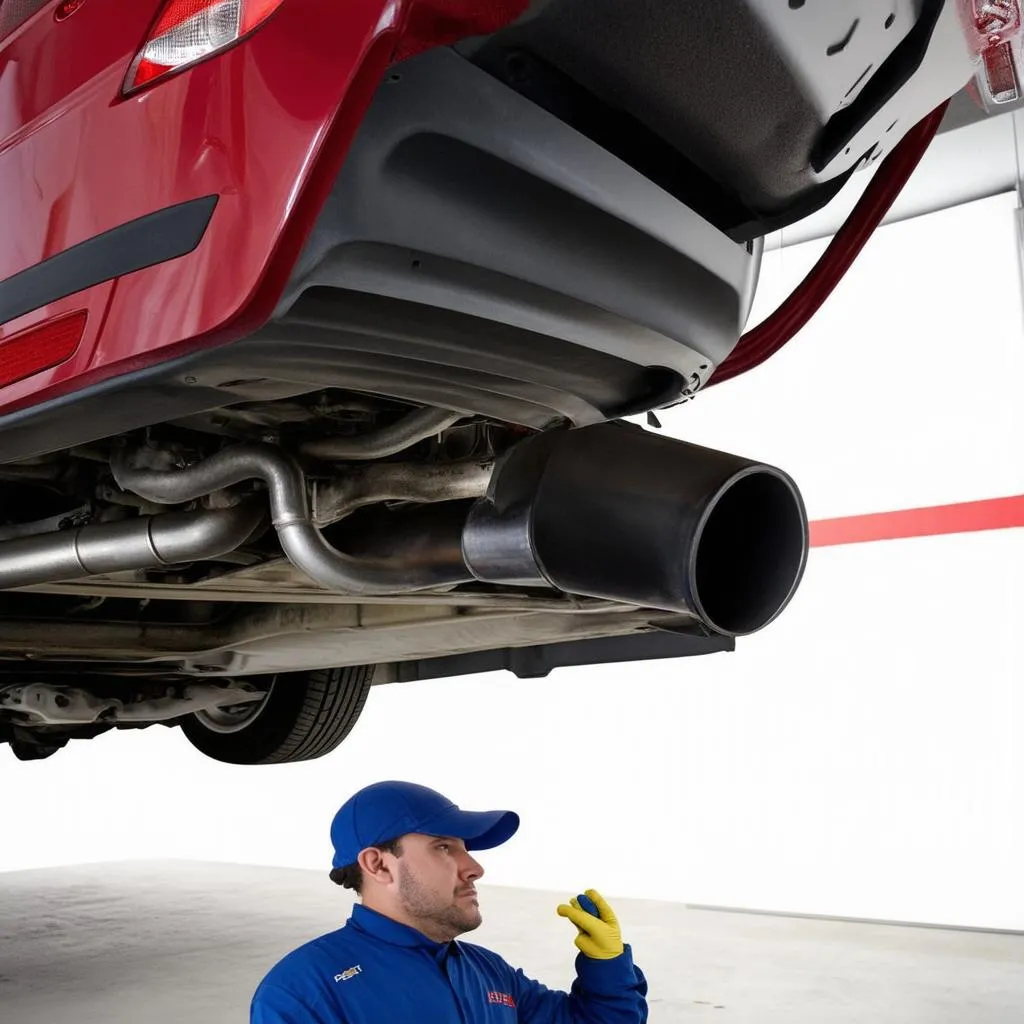“The engine light is on, and I don’t know what to do! It’s like my car is trying to tell me something, but I just can’t understand.”
This is a common scenario for many Chevrolet Aveo owners who encounter the dreaded OBD code P1133. This code signals a problem with the oxygen sensor, a vital component in your car’s exhaust system responsible for regulating fuel efficiency and emissions. This article will guide you through the meaning of this code, how to troubleshoot it, and what steps you can take to repair the issue.
Understanding the OBD Code P1133
What does this code mean?
The OBD code P1133 indicates a malfunction in the upstream oxygen sensor (also known as the front oxygen sensor) on your Chevrolet Aveo. The upstream oxygen sensor is located in the exhaust manifold before the catalytic converter. Its primary function is to monitor the amount of oxygen in the exhaust gases and send this information to the engine control unit (ECU). The ECU then uses this data to adjust the fuel mixture for optimal combustion.
Why is this important?
A faulty oxygen sensor can lead to various problems:
- Increased fuel consumption: The ECU will not be able to accurately adjust the fuel mixture, leading to a richer or leaner mixture, ultimately resulting in increased fuel consumption.
- Emissions issues: A malfunctioning sensor can lead to excessive emissions, potentially failing emissions tests.
- Engine performance issues: The ECU may not be able to properly control the engine’s timing and fueling, causing rough idling, hesitation, and even engine stalling.
How does it work?
The oxygen sensor is essentially a ceramic sensor that uses a thin layer of platinum to measure the oxygen content in the exhaust gases. Think of it as a tiny detective, constantly sending information to the ECU, allowing it to fine-tune the engine’s performance.
Troubleshooting the OBD Code P1133
What could be the cause?
There are a few common causes of the P1133 code:
- Faulty oxygen sensor: This is the most likely culprit, as the sensor itself can become damaged or worn out over time.
- Damaged wiring: Worn, frayed, or corroded wiring can interrupt the sensor’s connection to the ECU.
- Exhaust leak: A leak in the exhaust system before the oxygen sensor can cause inaccurate readings.
- Catalytic converter malfunction: A damaged catalytic converter can affect the oxygen sensor’s readings, causing the code to trigger.
Troubleshooting steps:
- Inspect the oxygen sensor for physical damage or corrosion: Visually inspect the sensor for any signs of damage or corrosion.
- Check the wiring: Ensure the wiring connecting the sensor to the ECU is securely connected and not damaged.
- Check for exhaust leaks: Listen for any unusual noises from the exhaust system, indicating a leak.
Professional Diagnosis:
If you are not comfortable troubleshooting these issues yourself, it is always advisable to consult a qualified mechanic for professional diagnosis and repair.
Repairing the OBD Code P1133
Replacing the oxygen sensor:
If the oxygen sensor is found to be faulty, it needs to be replaced. This is usually a straightforward process that can be done by a mechanic.
Repairing wiring:
Damaged wiring should be repaired or replaced by a qualified mechanic.
Repairing exhaust leaks:
Any leaks in the exhaust system should be addressed by a mechanic, as they can pose safety risks and also affect the performance of the oxygen sensor.
Catalytic converter replacement:
If the catalytic converter is damaged, it may need to be replaced.
Additional Tips and Information
Can the code P1133 be reset?
Yes, the code can be reset using an OBD2 scanner. However, resetting the code only clears the warning light. It does not fix the underlying problem, and the code will likely reappear if the issue is not addressed.
What are the potential consequences of ignoring the code?
Ignoring the code P1133 can lead to:
- Increased fuel consumption: The engine will not be operating efficiently, leading to higher fuel bills.
- Emissions issues: The engine will be emitting more pollutants than it should, potentially harming the environment.
- Engine damage: A faulty oxygen sensor can lead to engine damage over time.
What can I do to prevent this code from happening again?
Regular maintenance is crucial to prevent future oxygen sensor issues. This includes:
- Regular oil changes: Clean oil helps ensure the engine runs smoothly and reduces the risk of wear and tear on the oxygen sensor.
- Fuel system maintenance: Keep your fuel system clean to prevent deposits from clogging the oxygen sensor.
- Regular inspections: Have your car regularly inspected by a qualified mechanic.
Frequently Asked Questions
Q: What is the cost of replacing an oxygen sensor on a Chevrolet Aveo?
A: The cost of replacing an oxygen sensor on a Chevrolet Aveo can vary depending on the specific model and location, but it is typically in the range of $150 to $300.
Q: How often should I replace my oxygen sensor?
A: Oxygen sensors typically last for 50,000 to 100,000 miles. However, their lifespan can be affected by various factors, such as driving conditions and maintenance habits.
Q: What are the symptoms of a faulty oxygen sensor besides the P1133 code?
A: Other symptoms of a faulty oxygen sensor can include:
- Reduced fuel efficiency: You may notice a decrease in your gas mileage.
- Rough idling: The engine may idle roughly or stall at times.
- Hesitation during acceleration: The engine may hesitate or bog down when you accelerate.
- Exhaust smell: The exhaust may smell stronger than usual.
Q: Is it safe to drive with a faulty oxygen sensor?
A: While it is not immediately dangerous, it is not recommended to drive with a faulty oxygen sensor for an extended period. It can lead to increased fuel consumption, emissions issues, and potentially engine damage.
Q: Can I replace the oxygen sensor myself?
A: While it is possible to replace the oxygen sensor yourself, it is a relatively complex procedure that requires some technical knowledge and tools. It is generally recommended to consult a qualified mechanic for this task.
Other Related Articles on Techcarusa.com
Need Help?
If you’re struggling with the OBD code P1133 or other automotive issues, don’t hesitate to reach out to us! We are here to assist you with expert diagnostics and repair solutions. Our team of skilled mechanics is available 24/7 to provide guidance and support.
Contact us at WhatsApp: +84767531508 for immediate assistance.
Let’s get your Chevrolet Aveo back on the road, running smoothly and efficiently!
 Chevrolet Aveo Obd P1133 Oxygen Sensor" width="1024" height="1024">Chevrolet Aveo OBD P1133 Oxygen Sensor
Chevrolet Aveo Obd P1133 Oxygen Sensor" width="1024" height="1024">Chevrolet Aveo OBD P1133 Oxygen Sensor
 Chevrolet Aveo OBD P1133 Wiring
Chevrolet Aveo OBD P1133 Wiring
 Chevrolet Aveo OBD P1133 Exhaust
Chevrolet Aveo OBD P1133 Exhaust